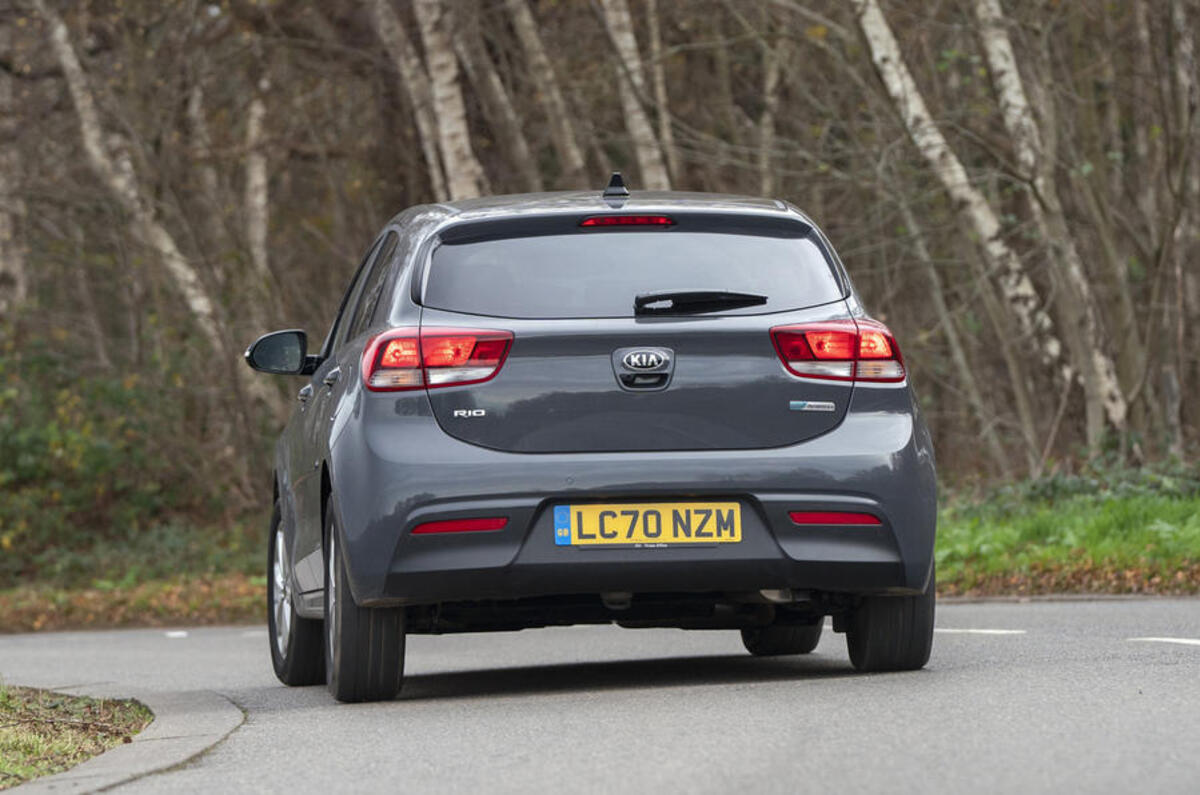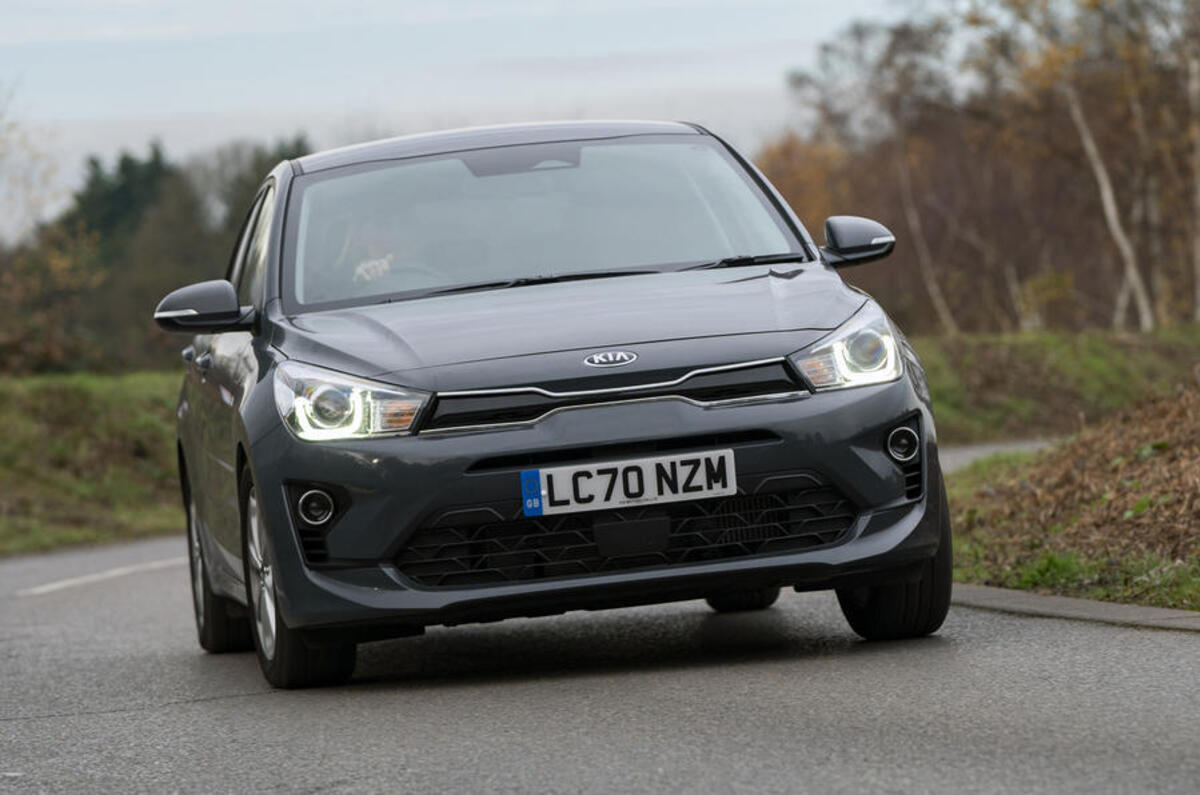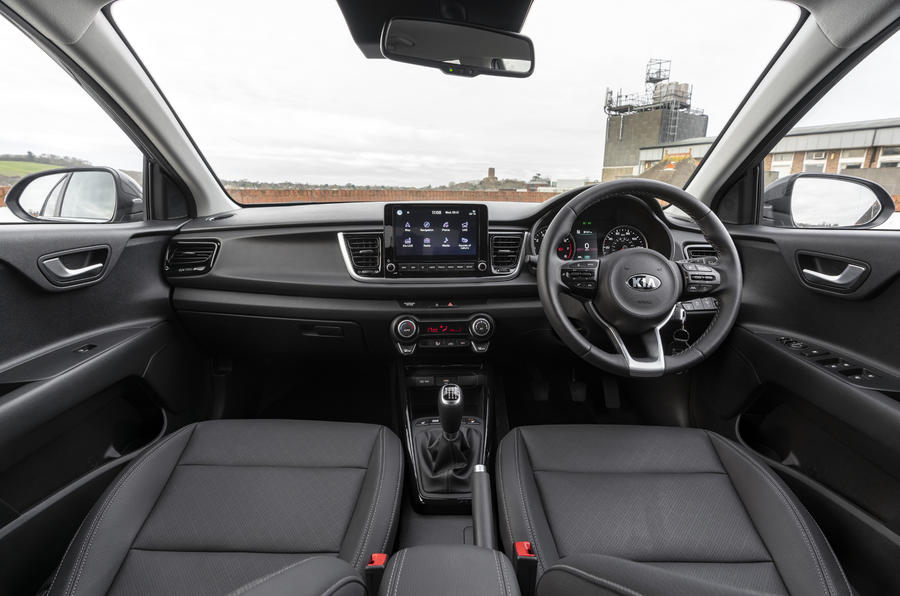Functional and ergonomically sound is how we characterised the last Rio’s cabin, and neither description is misplaced in its replacement.
Kia measures itself chiefly against Volkswagen, and it’s a yardstick that manifests in sensible placement and scale for most the car’s switchgear.
The temperature and blower are controlled by knobs, as they should be, and they're of a large, grabbable, idiot-proof size that makes them childsplay to operate, with impressive solidity of feel. The car's wired USB socket, which glows invitingly, is sited front and centre, while a smattering of other ancillary functions migrate to buttons on the centre console; but you won't need to wire up your handset to connect to the car's new 'UVO Connect II' touchscreen infotainment system, which handles smartphone mirroring wirelessly even in lower-middle spec cars.
The Rio's build quality provided a pleasant surprise in the last generation. You might say that it's failed to move the game on significantly in this car in terms of material richness, but there is a striking solidity and robustness to the feel of this car's fixtures and fittings which are simply rendered and seem made to last.
The cabin materials are fine to look at; hard to the touch, but not unpleasant and apparently well secured. They are not a match for the best of the European competition for outright tactile plushness, but they're certainly solid-feeling.
The Rio’s cabin design is correspondingly simple if unremarkable. The car declines the opportunity to try to be aesthetically interesting in its fascia layout, choosing instead the sort of conservative, pared back look that won't appeal much next to more colourful, eye-catching supermini interiors, but should certainly prove easy to live with.
Kia’s multimedia set-up mirrors the straightforward overall appeal of the Rio’s interior. Even in updated form it's a fairly workmanlike effort that eschews a flashy interface and graphical animations in favour of easily understood icons, good responsiveness and easy usability. It may not impress your friends to look at; but it's certainly pleasing to use.
You get the full-size, 8.0in setup included as standard from '2' trim upwards, which integrates with iPhone well enough; up to two mobile phones can be connected to it simultaneously. 'Connected' online factory navigation, with cloud-based route planning, appears on pricier versions of the car.
Kia’s by-the-numbers approach also pays dividends in terms of spaciousness. The last Rio was a large car for its class, and its replacement makes even more of the advantage. The driving position is a pleasingly low one to find in a small hatchback, and makes plenty of room for your elbows and knees. The car's extended wheelbase, meanwhile, only underlines the idea that this is a small hatchback built to accommodate adults in the rear.
The lower roofline has not significantly impinged on head room, and the largely flat bench will cater for three abreast at a push.
The boot is also adequately large for a class that tends to underwhelm in the stuff-swallowing department. Naturally the load bay’s seats-up length is not hugely plentiful at 700mm, but its claimed 325-litre capacity – a 13 percent increase on that which went before – is certainly not to be sniffed at. Much like the hard work that has gone into the marginal gains everywhere else.








































